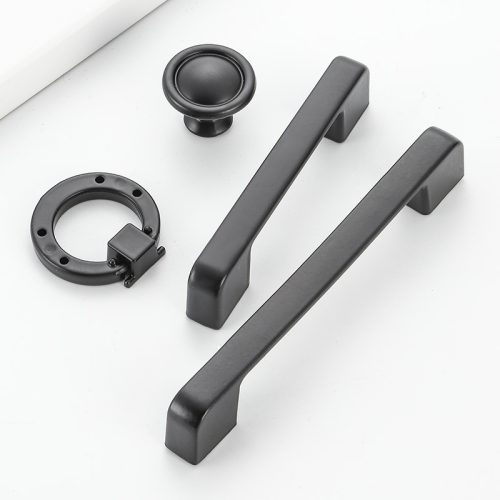Designing a versatile plastic door handle that is aesthetically pleasing involves considering both functional and visual aspects. Here’s a comprehensive guide to help you create a door handle that combines versatility and aesthetics:
1. Functionality:
- Ergonomics: The handle should be comfortable to grip and use by people of various ages and physical abilities.
- Grip: Design the handle with an optimal grip texture that ensures a secure hold, even when hands are wet or slippery.
- Size: Ensure the handle is appropriately sized for different hand sizes while maintaining a balanced appearance.
- Durability: Choose high-quality, durable plastic that can withstand frequent use without deforming or breaking.
- Easy Installation: Design the handle for easy installation, with standard screw placements that fit most door types.
- Lock Mechanism Compatibility: Ensure that the handle design accommodates various types of locking mechanisms, such as levers or knobs.
2. Aesthetics:
- Sleek Lines: Opt for clean and sleek lines that contribute to a modern and sophisticated look.
- Minimalism: Embrace a minimalist design that removes unnecessary ornamentation, resulting in a timeless appearance.
- Color Palette: Select a color palette that complements a range of interior styles. Neutral colors or subtle shades are often more versatile.
- Texture: Incorporate a visually appealing texture that adds tactile interest without sacrificing functionality.
- Contrast: Consider incorporating subtle contrasts in colors or finishes to add visual interest.
3. Versatility:
- Modular Design: Create a modular design that allows for customization. Users could switch out certain parts to adjust the look without replacing the entire handle.
- Interchangeable Panels: Incorporate interchangeable decorative panels or coverings that can be easily swapped to match changing interior themes.
- Adaptability: Design the handle to fit various door types, including standard doors, sliding doors, and cabinet doors.
- Style Compatibility: Ensure that the handle design can seamlessly fit into different design styles, such as modern, traditional, industrial, and more.
4. Sustainability:
- Recyclable Materials: Use environmentally friendly plastics that are recyclable and have a lower environmental impact.
- Durability: Prioritize a design that promotes longevity, reducing the need for frequent replacements.
- Minimal Waste: Design the handle with minimal waste during the manufacturing process.
5. Safety and Hygiene:
- Antimicrobial Coating: Consider adding an antimicrobial coating to the handle’s surface to reduce the spread of germs.
- Easy to Clean: Ensure the handle design is easy to clean and maintain, making it suitable for high-traffic areas.
6. User-Centric Design:
- User Research: Conduct user surveys or studies to understand preferences and pain points when it comes to door handles.
- User Feedback: Incorporate feedback from potential users during the design iteration process.
Remember that a successful door handle design involves a balance between functionality and aesthetics. Collaborating with a team of industrial designers, engineers, and user experience specialists can help you create a versatile and aesthetically pleasing plastic door handle that meets the needs of a wide range of users.


